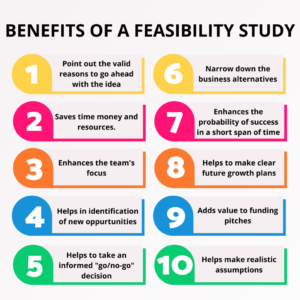Are you struggling with product decisions? Do you need to figure out if that great idea you are passionate about could become a successful business?
A feasibility study will let you make an informed “go” versus “no-go” decision. It acts as a screening test for your business idea and can help determine if your idea really had the merit or just looked good on the surface.
Related: Six Tips To Help You Choose A Winning Business Idea
But how do you create a formal Feasibility Plan that will help determine the true feasibility of your big business idea?
Not every idea is a good one. The last thing you will want to hear is that your business idea won’t fly. Writing a detailed feasibility plan will force you to take off the rose colored glasses and look at the idea honestly and entirely. It will help you define your market, identify your customers, potential partners and competitors, recognize opportunities and warn of potential threats.
Related: How To Know If Your Business Idea Is Viable

What Your Feasibility Study Should Include
Executive Summary
The Executive Summary is the first section of the plan and sums up the high points detailed throughout the remainder of the plan. It should include a brief, but thorough description of the idea, an overview of the products or services to be offered, the target market and target customer, startup costs, and pricing and profitability.
Product and Service Plan
This section details the product or service the business will offer. The point of the feasibility plan is not only to determine the Go/No Go result, but to get you really thinking about the idea from all angles.
– What is the purpose of the product or service?
– What stage of development is the idea in?
– What are the limitations of the product or service?
– Is there intellectual property involved?
– Are there government regulations or product liability issues to
be considered?
– Are there opportunities for future expansion or spin offs?
Marketing Plan
The marketing plan is one of the most important sections of the feasibility plan because it is here that you identify your market, your customer, and your competition. You will need to do market research to gather the information required to develop a realistic marketing plan. Just opening up the Yellow Pages to see what similar businesses are listed is not enough. You must have a clear handle on the size of your market, growth potential, and trends. You should identify all manner of competition (direct and indirect), and detail the advantages and disadvantages that your idea has when compared to competitors. You should also profile your target customer and tell why the customer would buy from you and not someone else.
Pricing and Profitability
The pricing and profitability section should include information on how the price of your product or service was determined and the expected profitability. Many entrepreneurs have no clue how to determine the price for their product. There are a number of ways to determine pricing. Once you have pricing data in hand, include it in this section along with details on sales estimates, costs of goods sold, gross margins, operating expense estimates, start up costs, capital expenditures, etc. The pricing section is where many ideas are abandoned because the entrepreneur discovers that the cost to deliver the goods is just too high and the profit margins just too low to merit execution.
Plan for Further Action
This final section of the feasibility plan simply details the next steps in executing the plan if a “Go” decision has been reached.
– Do you need capital for start up expenses? If so, how much and where will it come from?
– Is there a location to consider and equipment to be purchased?
– What role will you play in the operation of the business?
– Is there a business plan in work?
– Are there licenses that must be obtained or legal tasks like forming a corporation to be taken care of?
– Are there partnerships to be formed or key team members to be recruited?
Finally, don’t fear the outcome of the feasibility plan. If the feasibility plan reveals that your idea was a dud, i.e. a “No Go,” it is better to know that before spending thousands of hours and tens of thousands of dollars executing an idea that would have been better off left bouncing around inside your head.
If you have a great idea for a new business but don’t know where to start, consult with us today!
Also, be sure to check out our “Identify Your Winning Product Framework“.




